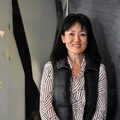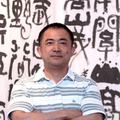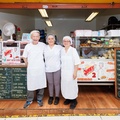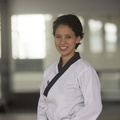Parte 1 >>
En permanente búsqueda
Llegado a Lima a los 16 años, empezó para Venancio Shinki la aventura del arte. Una pasión que lo ha llevado por distintos países y que le ha permitido interpretar, a su manera, la cotidianeidad, los sueños y todo aquello que lo conmueva.
Un buen día, el ya experto fotógrafo Venancio Shinki estaba viendo una revista y una imagen lo sorprendió por su perfección. Pero la foto no era tal; se trataba de un óleo. Entonces se dijo "Si alguien es capaz de pintar algo así como si fuera una fotografía, yo quiero aprender a hacerlo". El siguiente paso fue matricularse en la Escuela de Bellas Artes.
En aquella época se estudiaba 8 años y la Escuela pasaba por una época de oro por la calidad de los profesores. El inquieto Shinki, con su romanticismo a cuestas, sintió que la pintura era lo suyo y que se trataba de una carrera preciosa, con la que quizás no conseguiría trabajo muy pronto, pero que le daba toda la libertad del mundo.
"Yo entré a la Escuela pensando en ser un retratista, pero a los pocos años me di cuenta de que había tantas posibilidades en la línea y el color que dejé esa idea totalmente y comencé la aventura de la pintura, conociendo las tendencias de todo el mundo, principalmente de París, Nueva York e Italia, que eran la cuna del arte, teniendo además maestros como Juan Manuel Ugarte Eléspuru, que es el mejor profesor que he tenido".
Al egresar de Bellas Artes, en 1962, fue reconocido con el premio Sérvulo Gutiérrez de su promoción. La pintura de Shinki, para entonces, era ya de un expresionismo abstracto y con esta tendencia representó al Perú en la Bienal de Sao Paulo.
"Era el primer viaje de mi vida al extranjero. Yo era muy joven y estaba extasiado por conocer a los capos de la pintura, pero empecé a analizar lo que ellos hacían y lo que yo hacía. Lo mío no estaba mal, pero estábamos dentro del mismo camino, del expresionismo abstracto. Entonces me digo ¡qué tontería!, hay algo que falla, me preocupé muchísimo. A mi regreso, decidí que debía encontrar mi camino, así que viajo a Nueva York, capital de la plástica universal.
Allá me doy cuenta, casi como una revelación, que ese camino lo tenía que encontrar en mí mismo, en mi corazón, en mis vivencias. Regreso al Perú y me recluí en mi taller del centro de Lima y no salí por meses, trabajé y trabajé, hasta que comenzó a salir poco a poco. Sentía que Perú me dolía, como ahora mismo. Mi trabajo como dibujante en un periódico me acercó más a la gente. Ya Venancio Shinki no era el mismo. Era un hombre al que le dolía más lo que acontecía en el Perú y eso lo interpreto a mi manera".
"Siempre estoy tratando de buscar algo que me conmueva. Lo que me quema por dentro de alguna manera va a salir, no lo interpreto inmediatamente, sino dejo que se haga sangre, que se asimile y se plasme en mi pintura"
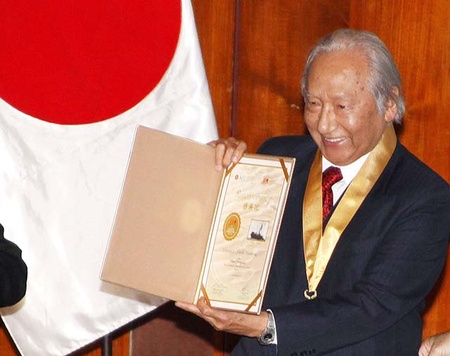
En el año 2009, en el marco de las celebraciones por el 110º aniversario de la inmigración japonesa al Perú, Shinki fue distinguido como “Nikkei destacado” por la Asociación Peruano Japonesa.
El pintor y sus influencias
La sensación onírica que se desprende al apreciar las pinturas de Shinki nos lleva a pensar en referencias que tienen que ver con sueños o fantasías. "Evidentemente es así, pero mis pinturas tienen un nacimiento concreto. Un dolor, una alegría, una esperanza, con toda seguridad", nos dice el pintor.
"Ahora la pintura ha cambiado, he viajado tanto, he trabajado en Italia algunos años, hice exposiciones, pero tratando de ser cada vez más auténtico y mantenerme fiel a mí mismo. Yo voy a morir siendo pintor. En este momento hay una corriente en las bienales (Sao Paulo, Venecia) donde hay proyecciones, instalaciones... No digo que estén mal, pero eso no tiene nada que ver con la pintura.
El pintor se nutre de todo. Queda como una vivencia. Lo que le acontece a uno de niño, de joven, cuando se enamora. Un libro, un poema, una película, la música, son alimentos del ser humano. Es un cúmulo de elementos que uno va asimilando, lo que más le conmueve de una u otra manera va a salir. Pero lo que he aprendido es que no debo forzar lo que soy como pintor. Yo soy de ascendencia japonesa, de madre peruana, nacido en Latinoamérica, pero no debo forzar absolutamente mi japonismo ni mi peruanidad. Que me salga espontáneamente todo. Esa actitud es la que trato de tener como pintor".
Y con la voz autorizada que representa, Shinki nos habla de los artistas plásticos nikkei, entre quienes destaca a Eduardo Tokeshi y a Aldo Shiroma. "Sus trabajos son muy interesantes, y siempre es estimulante ver a un nikkei destacando con propuestas personales", nos dice.
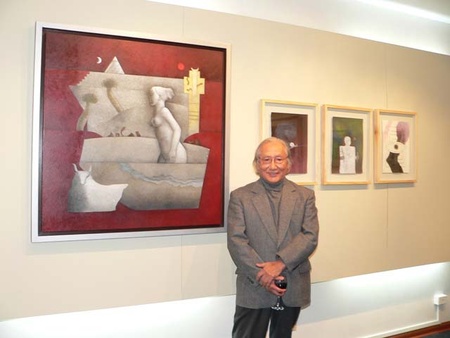
Venancio Shinki, en muestra colectiva de artistas nikkei en el Museo de la Inmigración Japonesa al Perú “Carlos Chiyoteru Hiraoka”.
Viaje a Japón
Gracias a las gestiones del arqueólogo japonés Yoshio Onuki, y en el marco del centenario de la inmigración japonesa al Perú, en 1999 Venancio Shinki viajó por primera vez a Japón para asistir a una muestra de artistas nikkei en Hiroshima y en el Museo del Hombre de Inuyama, donde también participaron el pintor Eduardo Tokeshi y el escultor Carlos Runcie Tanaka.
Ese viaje le permitió además conocer a familiares en Hiroshima, una sorpresa que le prepararon, y de la que sus gestos y palabras hablan de su profunda emoción. Como la que sintió al tocar la campana al final del Paseo del Holocausto, rememorando a su padre y sintiendo que era una manera de desear paz y concordia.
Una experiencia que se suma a las tantas de su larga carrera que continúa con el mismo afán de búsqueda. "Ser pintor es ser terco, un poco loco, un poco irresponsable, pero vale la pena. Es una pasión, sin duda alguna", sentencia Shinki.
* Este artículo se publica gracias al convenio entre la Asociación Peruano Japonesa (APJ) y el Proyecto Discover Nikkei. Artículo publicado originalmente en la revista Kaikan Nº 1 y Nº 2, julio – agosto de 2005 y adaptado para Discover Nikkei.
© 2005 Asociación Peruano Japonea



